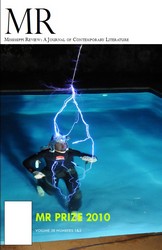Fractured West – 2011
Fractured West is a new, innovative journal for flash fiction. Although sponsored in part by a grant from Creative Scotland, it features writers from all over. Fractured West’s editor says, “We want readers to see things in a different way. For this, we need writers who write things in a different way,” and the intricate, precise prose found in this sleight journal, in a pocket-sized, compact format, proves that they have found writers who present different delight after different delight. Continue reading “Fractured West – 2011”




